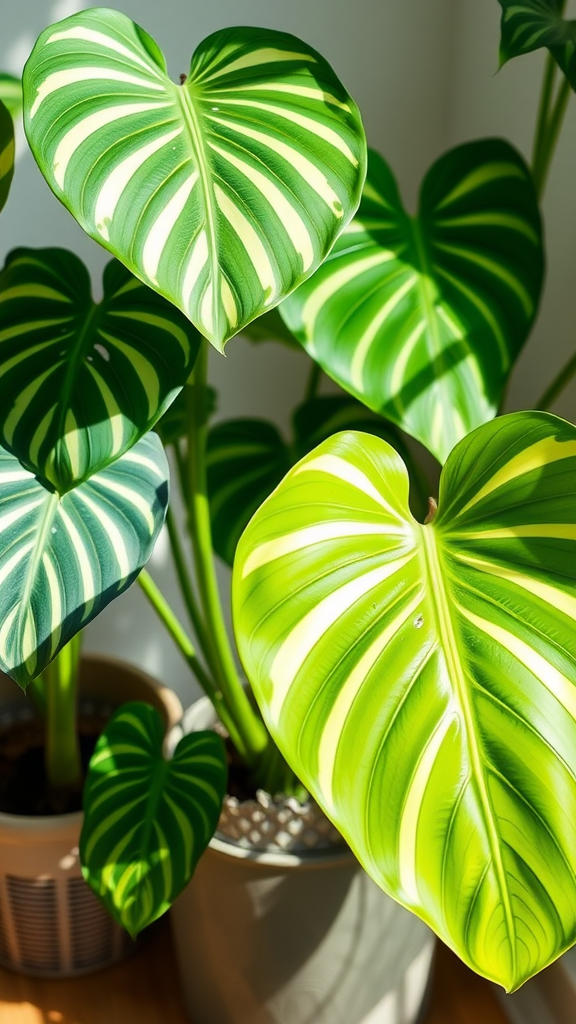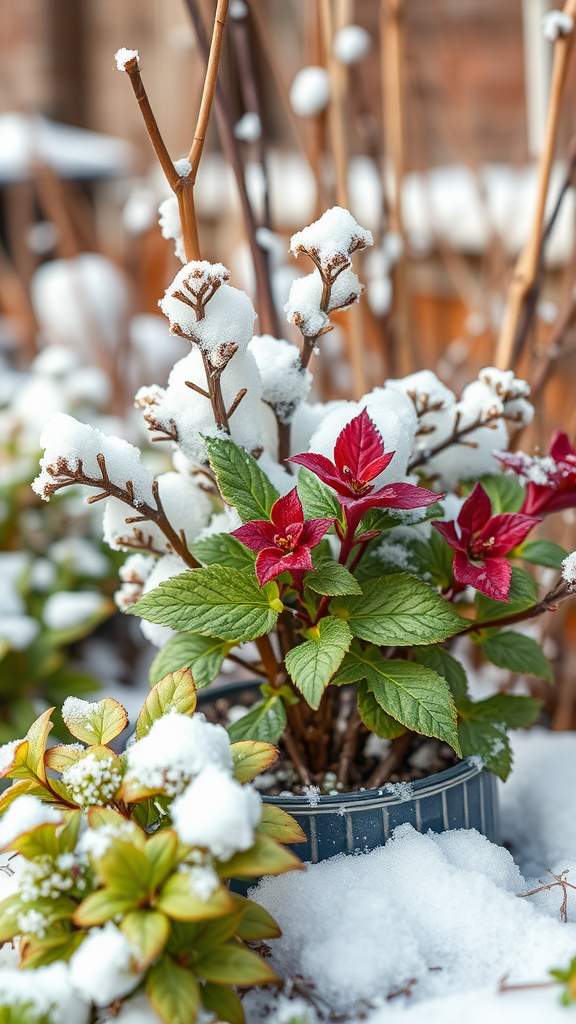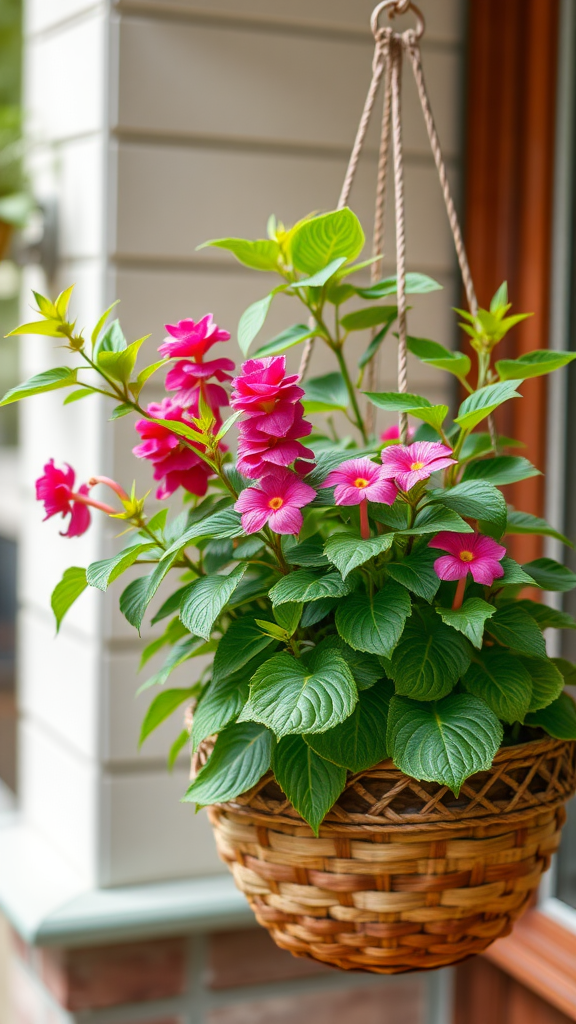10 Essential Tips for Keeping Your Monstera Happy and Healthy
If you’re a proud owner of a Monstera plant, you know that these stunning greenery pieces require some care to thrive. Here are ten essential tips to help you keep your Monstera happy and healthy.
1. Provide Bright, Indirect Light
Monstera loves light but not direct sunlight. Too much direct exposure can scorch its leaves. Place your plant in a spot where it can receive bright, indirect sunlight for most of the day. A north or east-facing window is often ideal.
2. Water Wisely
Overwatering is one of the most common mistakes made with Monstera plants. Allow the top inch of soil to dry out before watering again. During the growing season (spring and summer), you might need to water more frequently, while in fall and winter, reduce the frequency.
3. Humidity Matters
Monsteras thrive in humidity levels of around 50% or higher. If your home is dry, consider placing a humidifier nearby or setting your plant on a tray filled with water and pebbles. Misting the leaves occasionally can also help boost humidity.
4. Fertilize Regularly
Your Monstera will benefit from regular feeding during the growing season. Use a balanced, water-soluble fertilizer every month. This will support healthy growth and vibrant green leaves. In the fall and winter, you can cut back on fertilizing.
5. Check for Pests
Keep an eye out for common pests like spider mites, mealybugs, and scale. If you spot any, don’t panic. You can often remove them with a damp cloth or a gentle spray of insecticidal soap. Regularly inspecting your plant can keep these pests at bay.
6. Repot When Necessary
As your Monstera grows, it may outgrow its pot. Repot every couple of years or when you notice roots growing out of the drainage holes. Choose a pot that’s one size larger, and use fresh potting soil that provides good drainage.
7. Prune for Health
Pruning is important for maintaining your Monstera’s shape and health. Remove any yellow or damaged leaves to encourage new growth. You can also trim back leggy stems to promote bushier growth.
8. Support Your Plant
If your Monstera starts to grow tall, consider providing a moss pole or trellis for support. This allows your plant to climb and helps it develop larger leaves. Monsteras are natural climbers, so they will appreciate this added structure.
9. Monitor Temperature
Monsteras prefer temperatures between 65°F to 85°F (18°C to 29°C). Avoid placing your plant near drafts or heating vents, as sudden temperature changes can stress it. Keeping your plant in a stable environment ensures its well-being.
10. Rotate Regularly
To ensure even growth, rotate your Monstera every few weeks. This will allow all sides of the plant to receive light, preventing it from leaning toward one direction. You’ll be rewarded with a fuller, more balanced Monstera.
By following these ten tips, you can create the perfect environment for your Monstera plant to flourish. Taking care of your plant not only enhances its beauty but also contributes to your home’s atmosphere. So go ahead, embrace your green thumb and enjoy the journey of nurturing your Monstera!
Understanding Common Monstera Issues and How to Fix Them
Monstera plants are popular choices for both novice and experienced plant enthusiasts due to their unique appearance and easy-going nature. However, sometimes they can show signs of distress or trouble. Understanding common issues that affect Monstera plants and knowing how to fix them can help you maintain a happy and healthy plant. Here are some of the most common problems and their solutions:
Yellowing Leaves
If you notice your Monstera’s leaves turning yellow, it could indicate several underlying problems. Here’s how to troubleshoot:
- Overwatering: Yellow leaves often result from too much water. Let the soil dry out between waterings.
- Underwatering: Conversely, if the leaves start to yellow and curl, you may not be watering enough. Water thoroughly and keep the moisture consistent.
- Pests: Check for signs of pests like spider mites or mealybugs. Treat them with insecticidal soap if necessary.
Brown Leaf Tips
Browning tips on your Monstera can be a sign that something is wrong. These often occur due to:
- Low Humidity: Monstera plants thrive in humid environments. Increase humidity by misting the leaves or using a humidifier.
- Fluoride Sensitivity: Some Monstera plants don’t react well to tap water containing fluoride. Use distilled water instead.
- Fertilizer Burn: Over-fertilizing can cause leaf tips to brown. Use a balanced fertilizer and follow the recommended application rates.
No New Growth
If your Monstera seems stagnant and isn’t producing new leaves, it can be frustrating. Consider these factors:
- Light Conditions: Monsteras prefer bright, indirect light. If your plant isn’t getting enough light, try moving it closer to a window.
- Pot Bound: A root-bound plant will show slow growth. Check if it needs to be repotted into a larger container.
- Seasonal Dormancy: It’s normal for Monstera plants to slow down in winter. Be patient, as they will generally bounce back in the spring.
Insect Infestations
Insects can become a nuisance, impacting the health of your Monstera. Stay vigilant for:
- Spider Mites: Tiny red or brown specks that create webs. Increase humidity and treat with insecticidal soap.
- Mealybugs: White, cotton-like pest clusters on the leaves. Remove them manually or use a cotton swab dipped in alcohol.
- Scale: Brown bumps that resemble raised spots on leaves. Scrape them off and apply a horticultural oil for treatment.
Leaves Turning Brown and Falling Off
This issue can be distressing, but understanding the causes can guide you to a solution:
- Transplant Shock: If you recently repotted your Monstera, it might experience shock. Give it time to adjust.
- Pest Damage: As mentioned, pests can weaken your plant with feeding. Always inspect for pests regularly.
- Improper Watering: Too much or too little water can cause leaves to deteriorate. Aim for consistency.
Leggy Growth
Leggy growth occurs when your Monstera stretches out in search of light. To remedy this, consider:
- Providing More Light: Move your plant to a brighter location to encourage bushier, healthier growth.
- Regular Pruning: Trim back leggy stems to promote fuller growth. You can propagate the cuttings to grow new plants!
By keeping an eye on these common issues and addressing them promptly, you can help your Monstera thrive. Remember, your plant’s health directly reflects care. With a little attention and knowledge, your Monstera will continue to grow beautifully for years to come!
Conclusion
Keeping your Monstera happy and healthy is all about understanding its unique needs and responding to any challenges that might arise. By implementing the ten essential tips shared, you can create an optimal environment for your plant, ensuring it thrives. From providing the right amount of light to ensuring proper watering and humidity levels, each aspect contributes to the overall wellbeing of your Monstera.
Recognizing and addressing common Monstera issues early is crucial to maintaining its health. Whether it’s yellowing leaves due to overwatering or stunted growth from low light, being proactive can prevent more serious problems down the line. Remember, your Monstera’s needs might change with the seasons, so stay attentive and adjust your care routine accordingly.
Enjoy the journey of nurturing your Monstera. Its stunning foliage not only adds beauty to your space but also serves as a reminder of the joy that comes with caring for a living thing. Engage with your plant, observe its changes, and learn from any mistakes made along the way. With the right approach and a little patience, your Monstera will flourish, providing you with vibrant greenery for years to come. Happy gardening!





